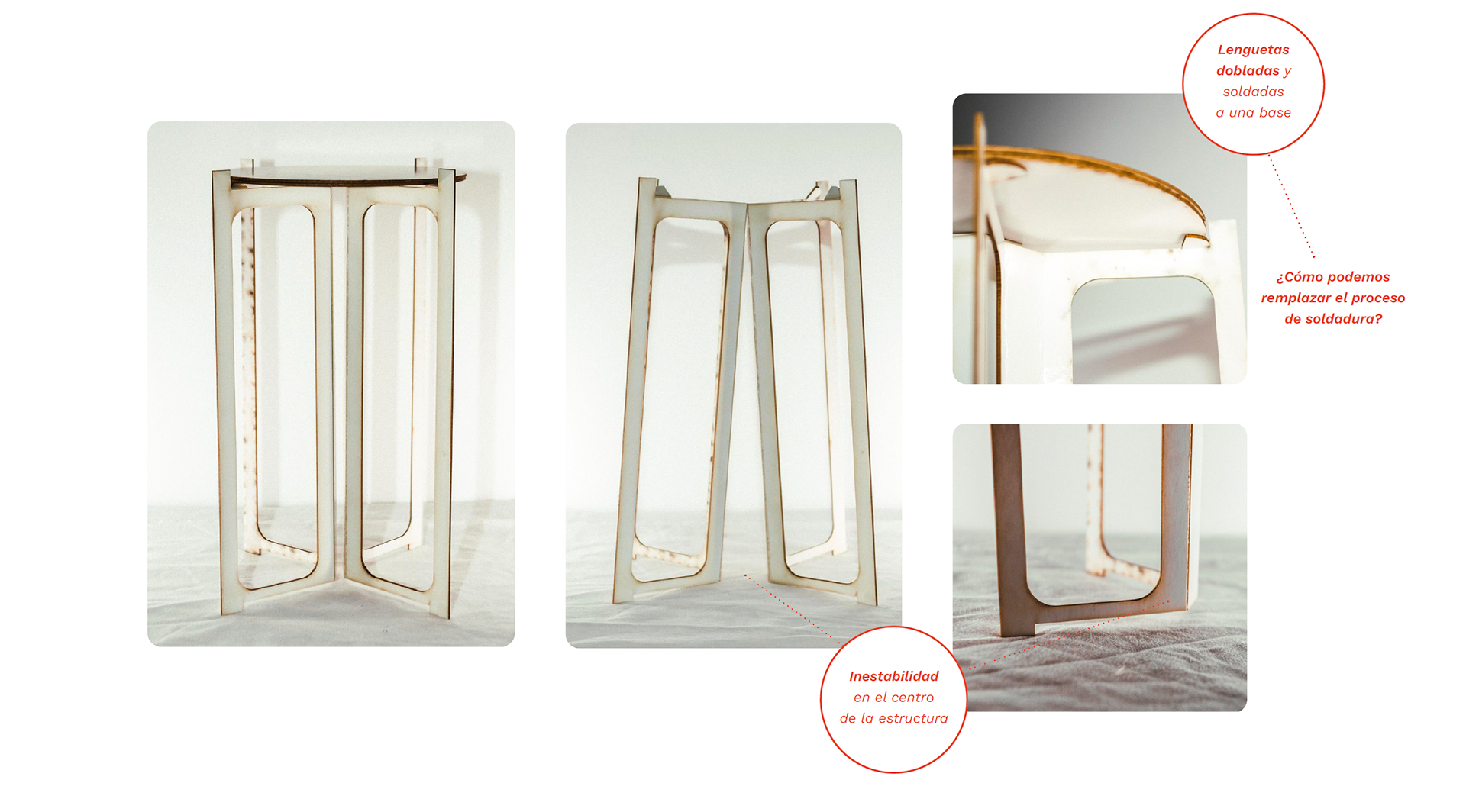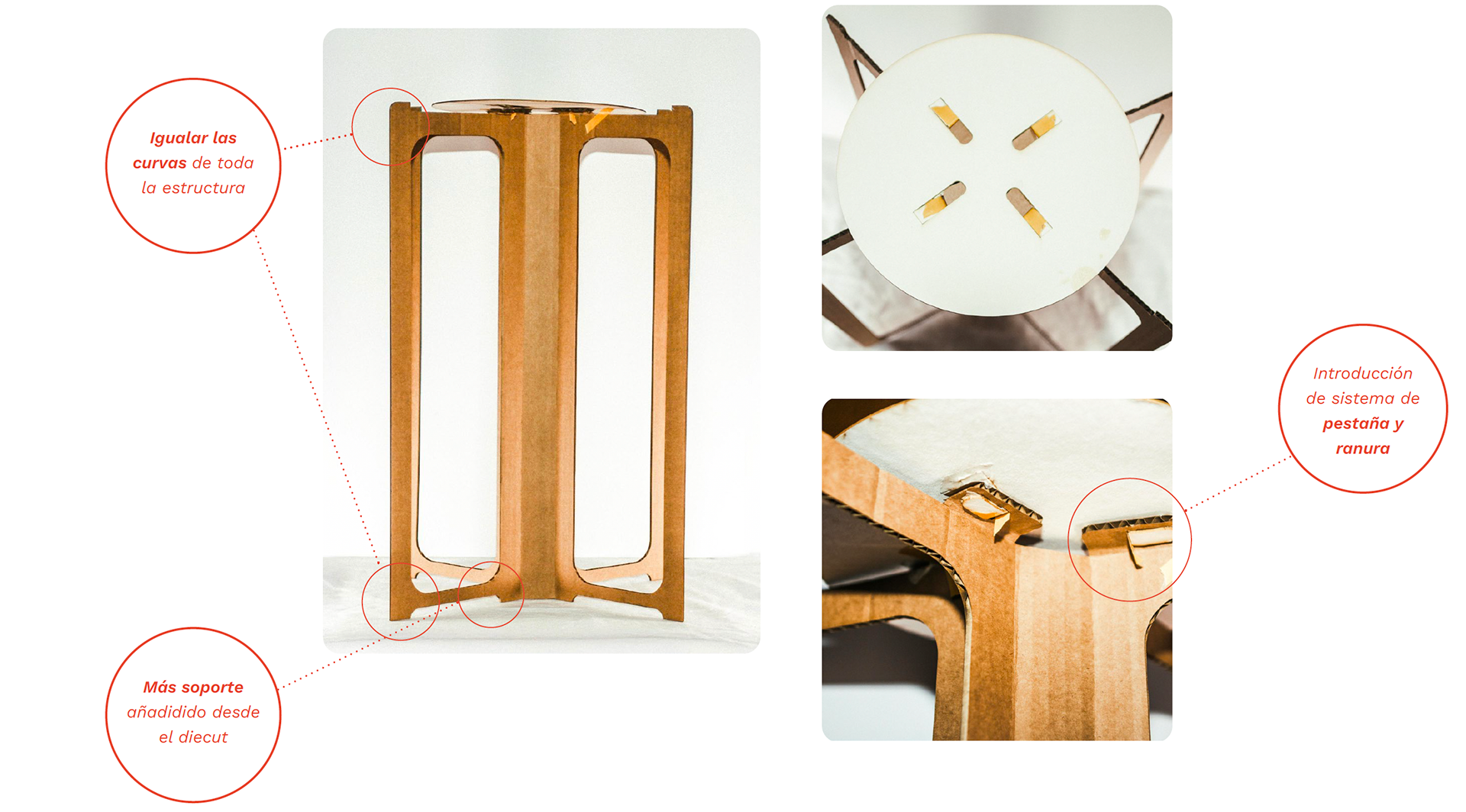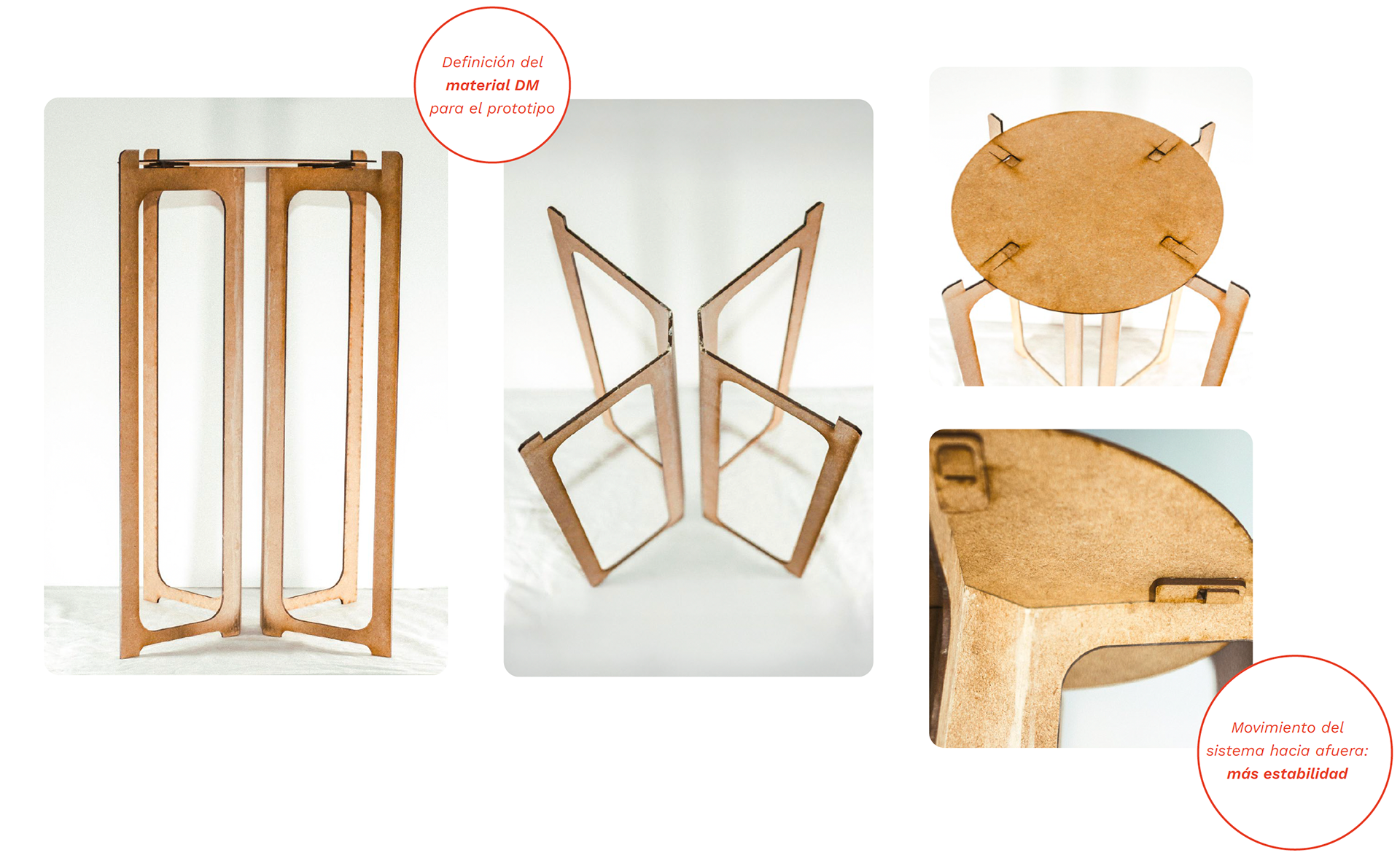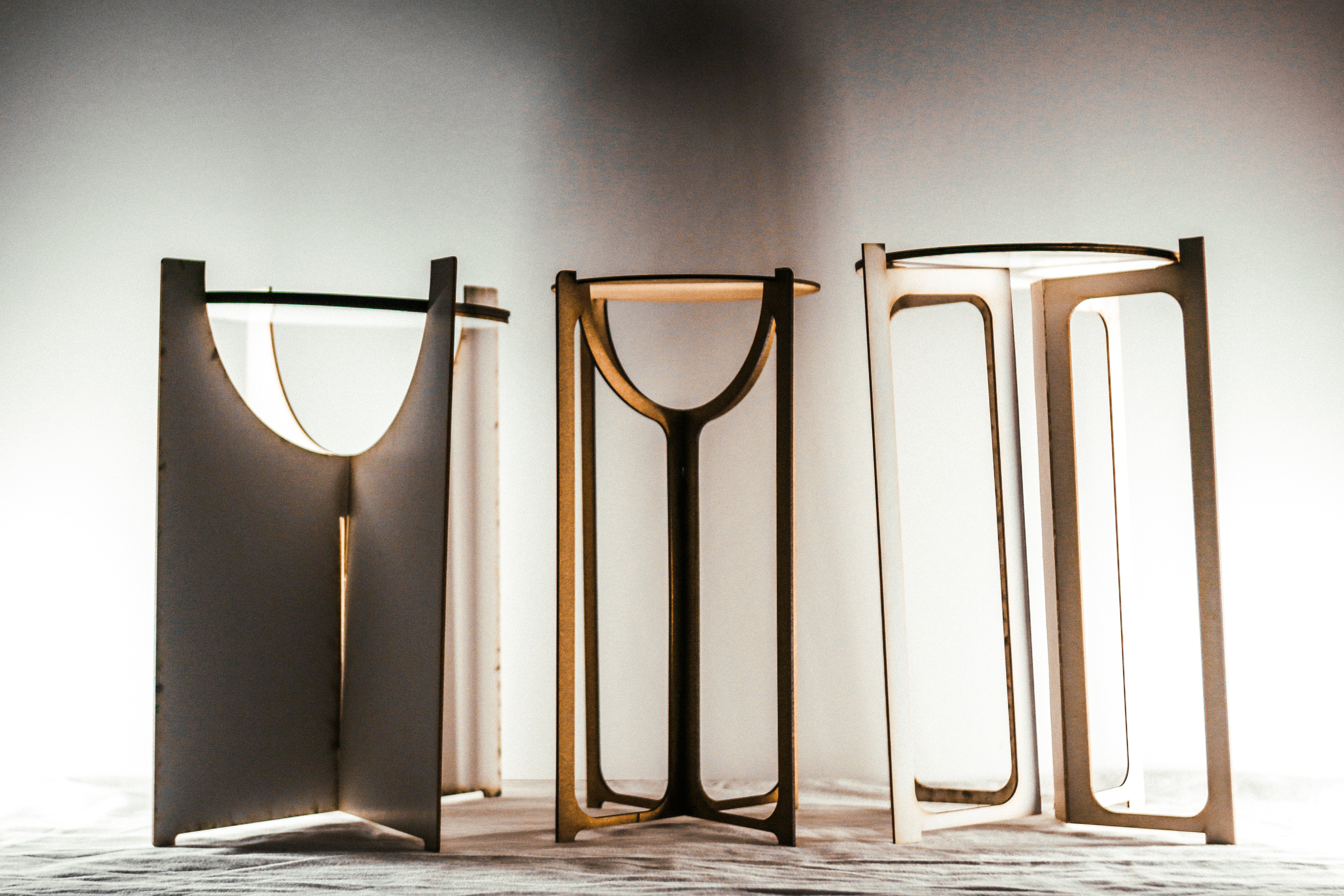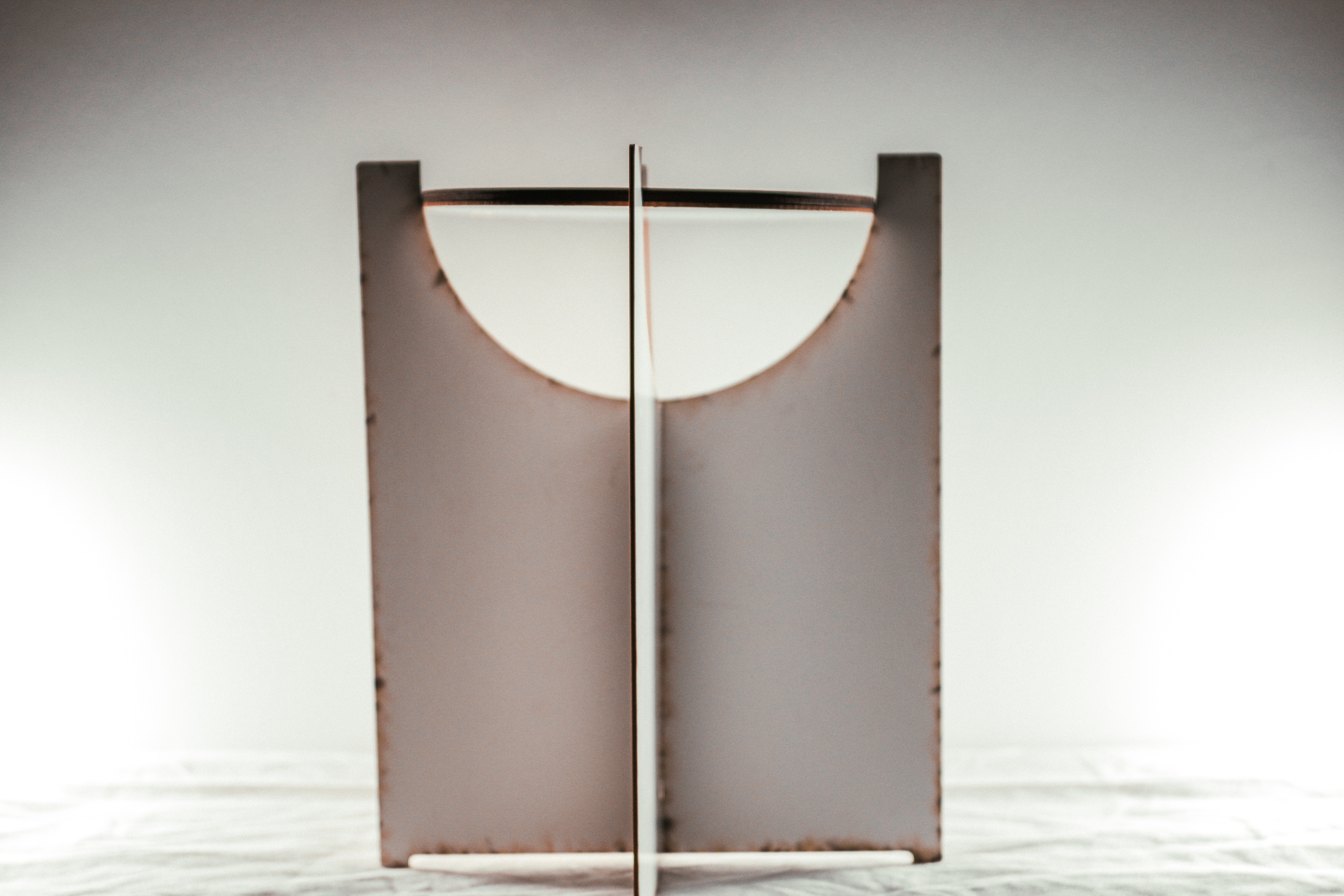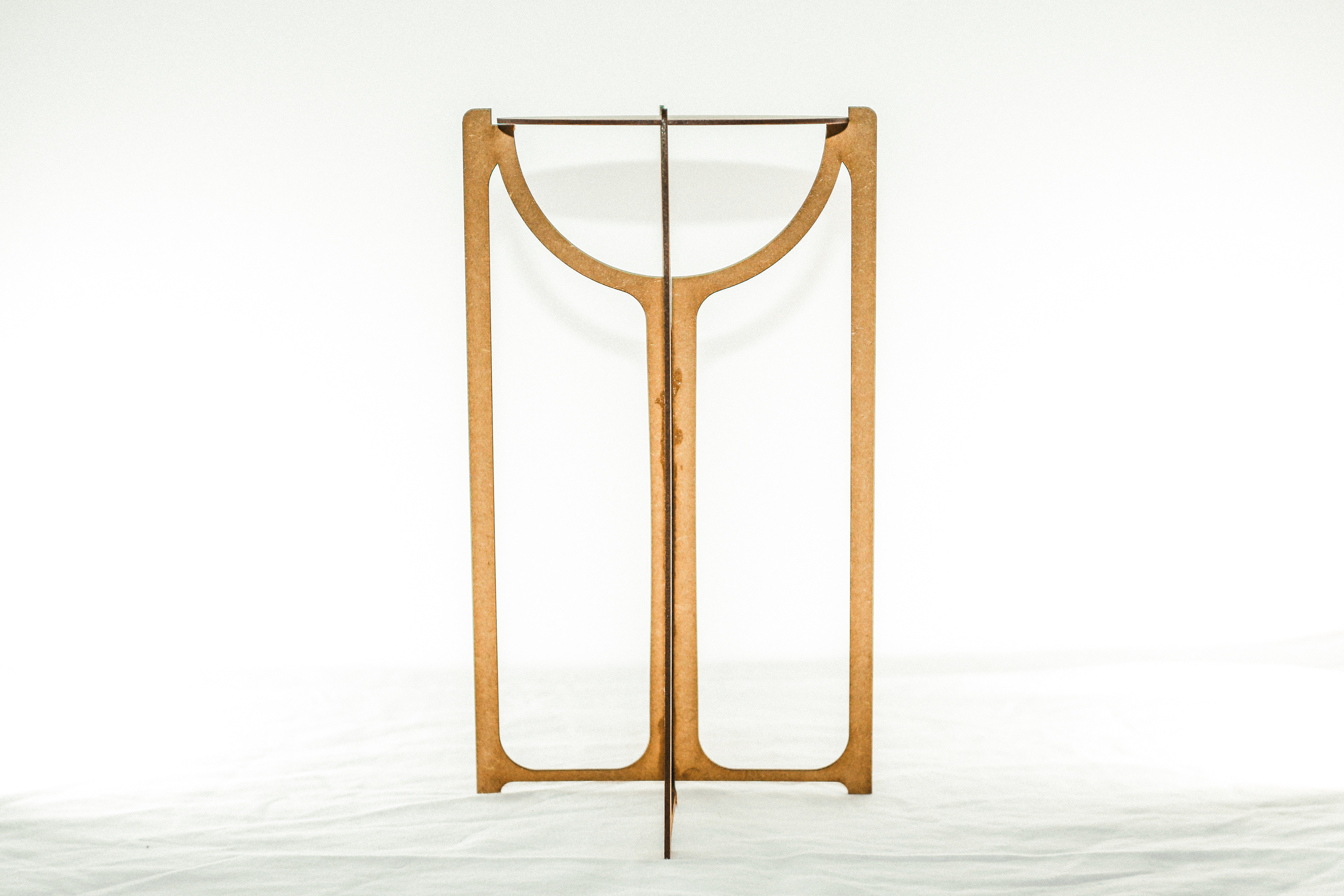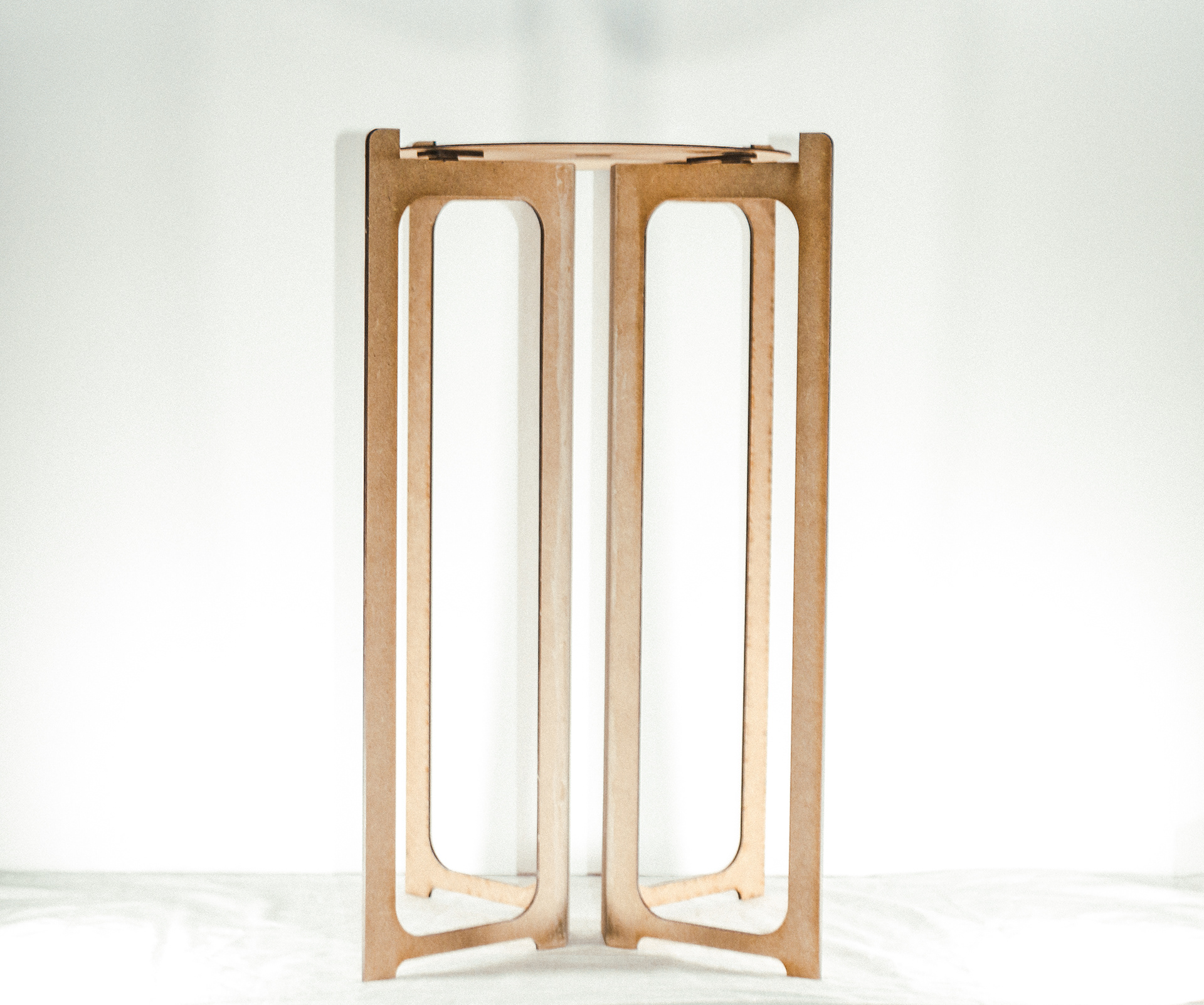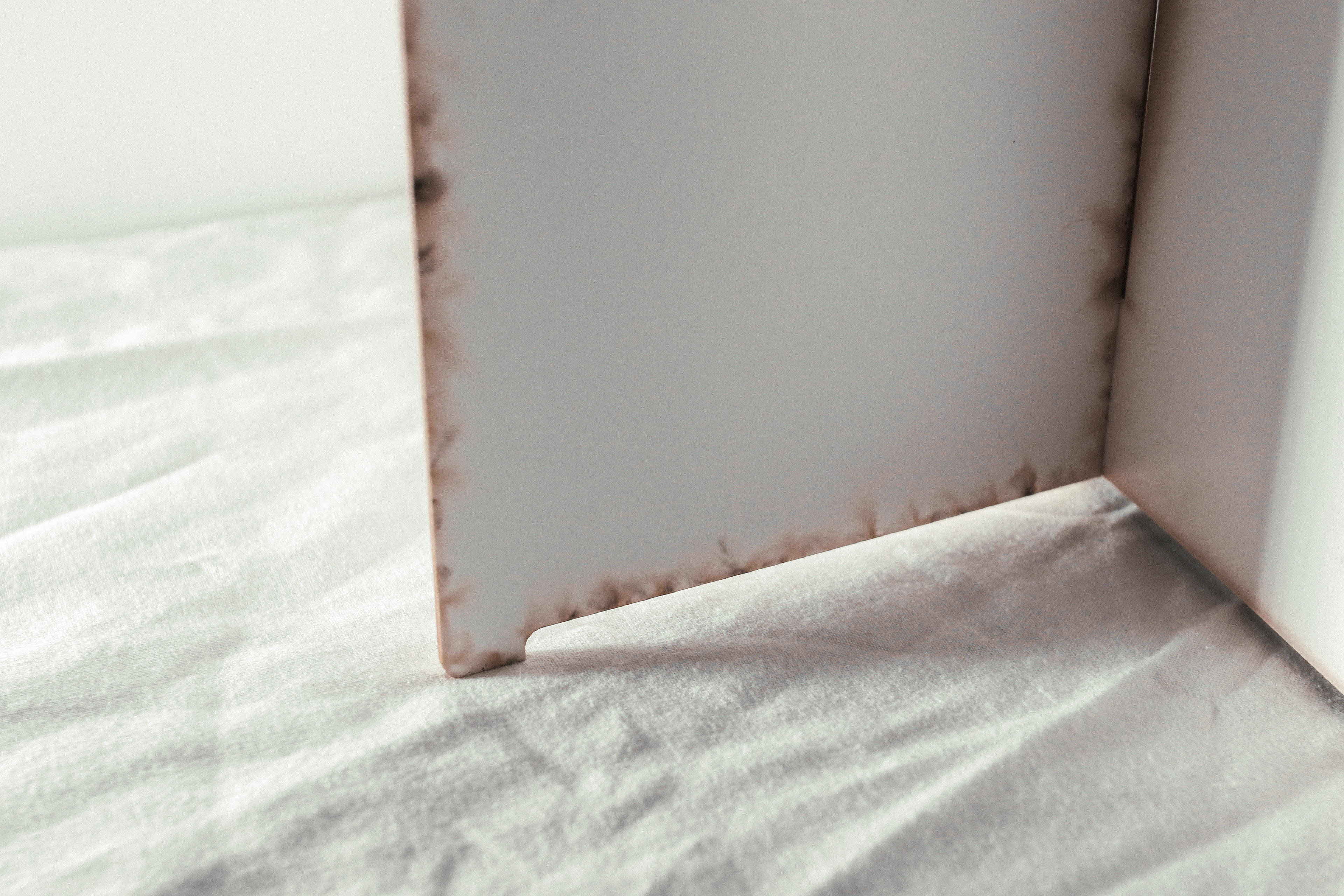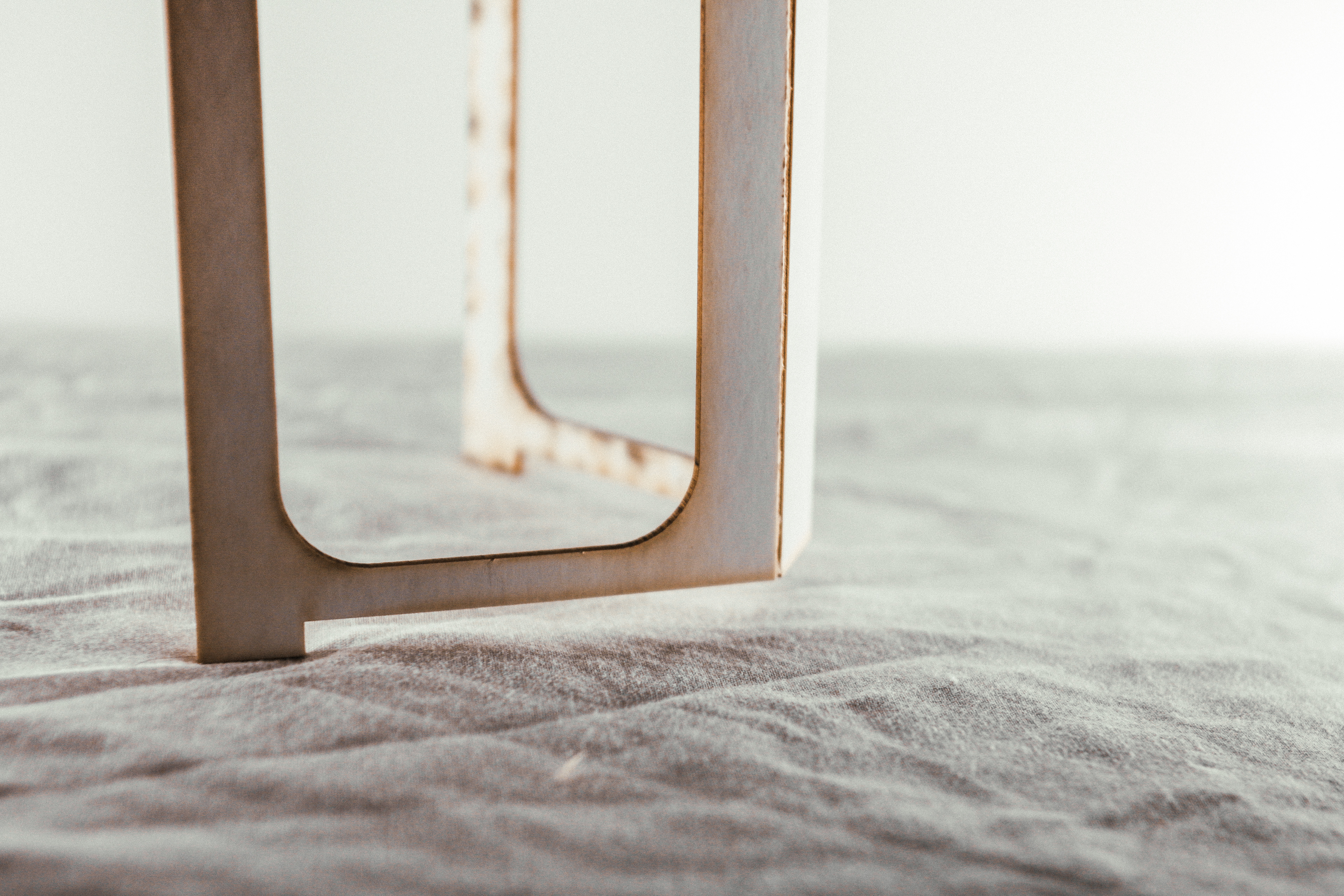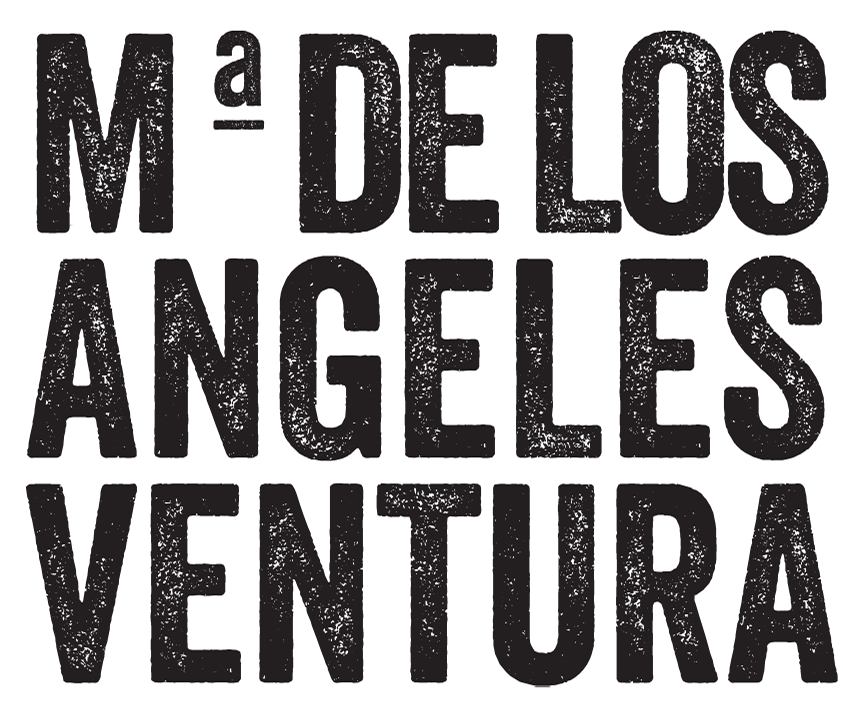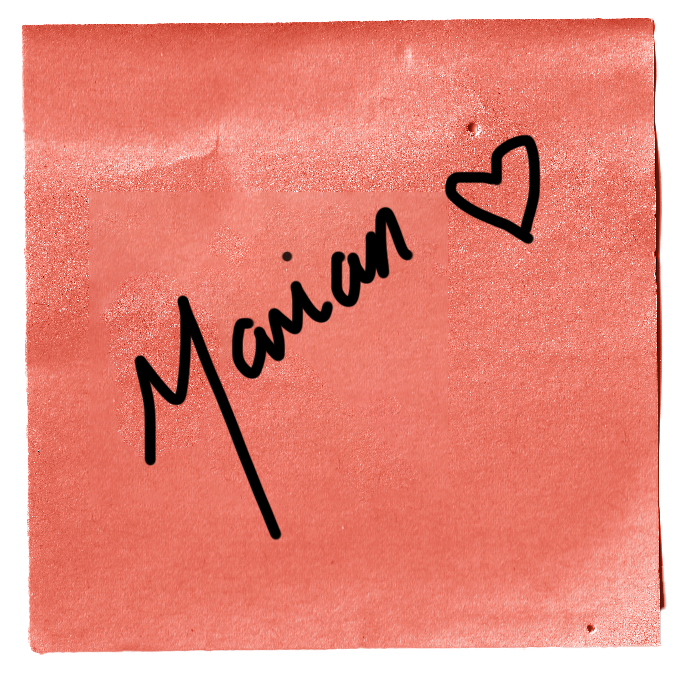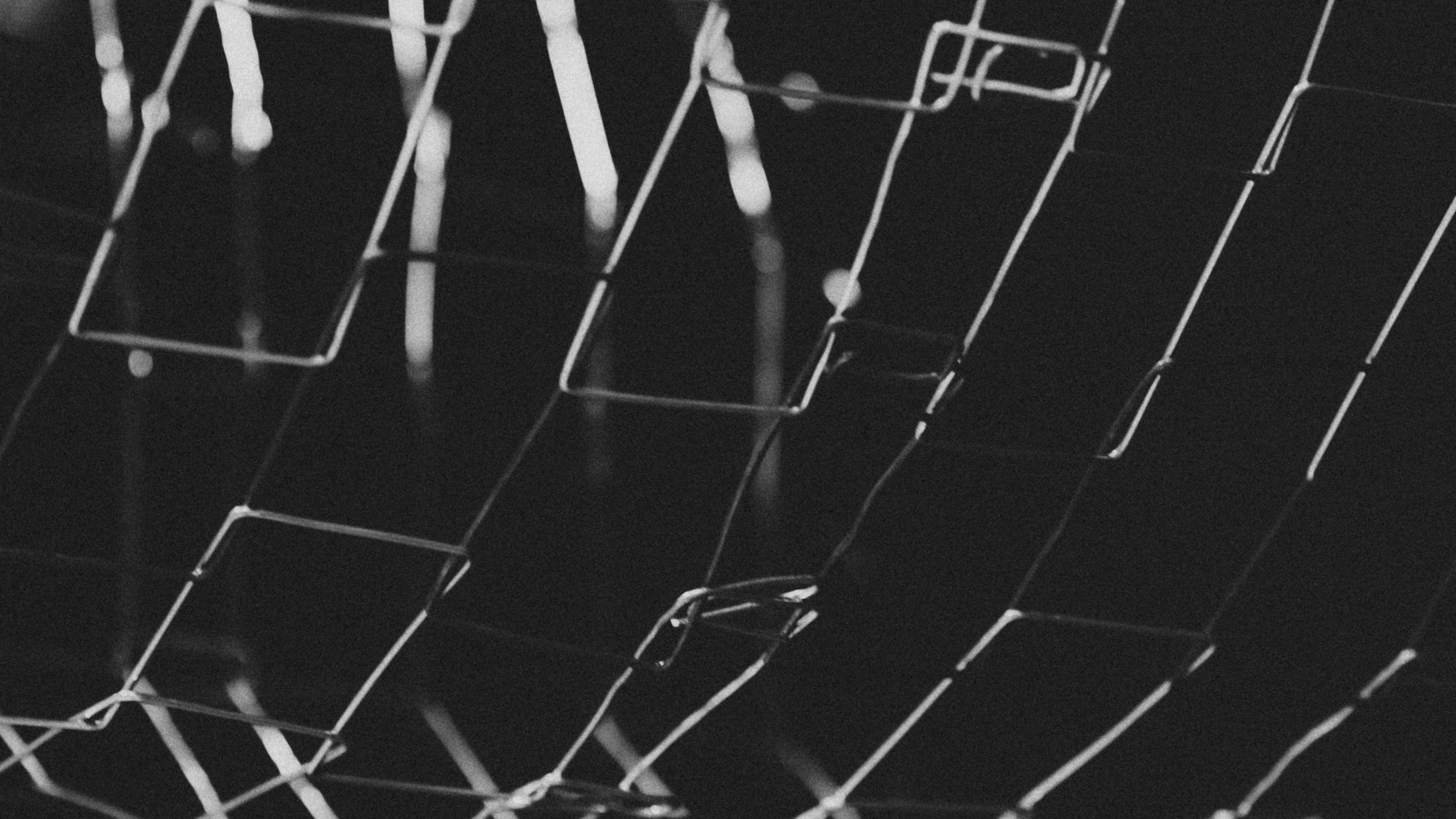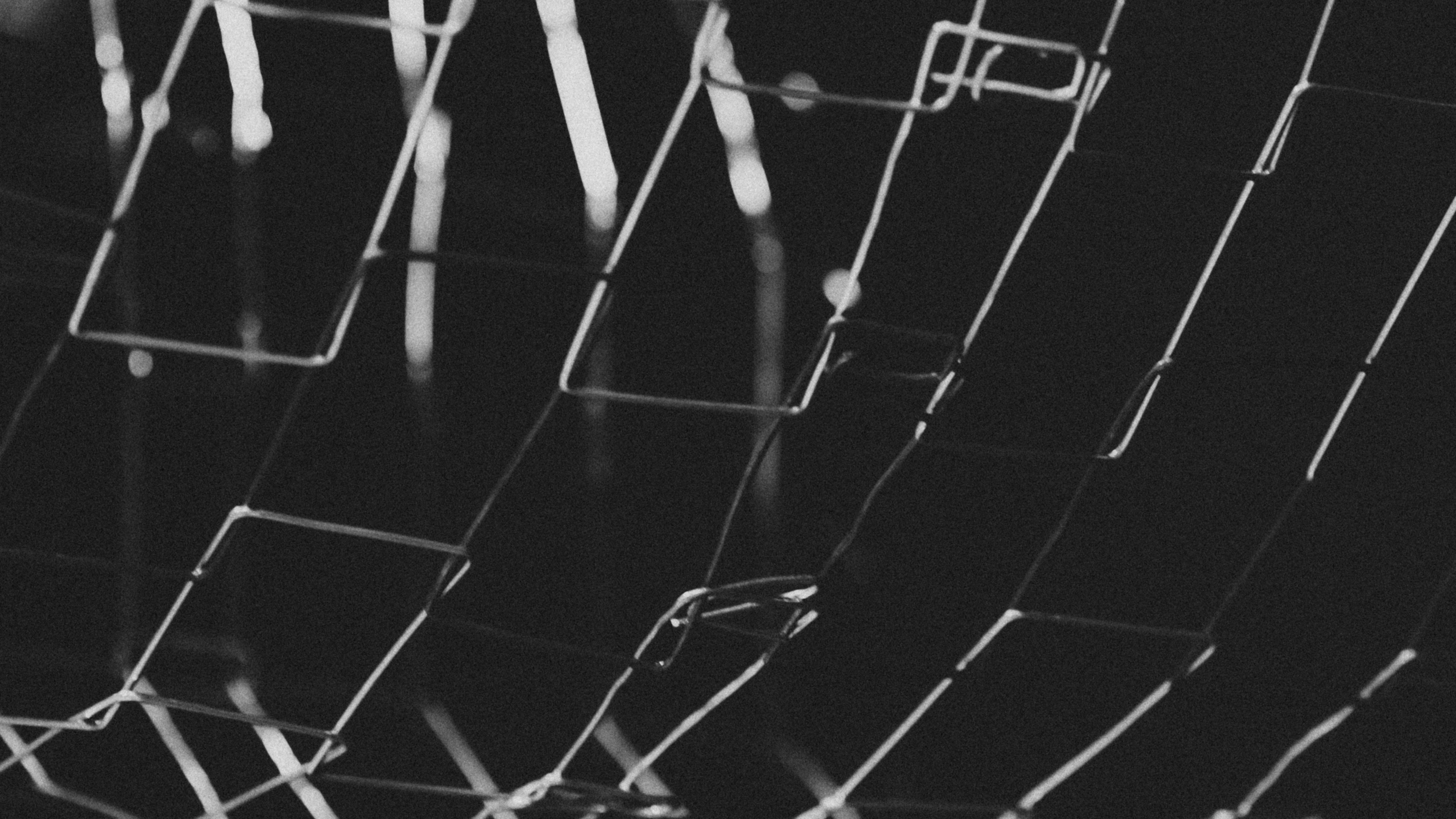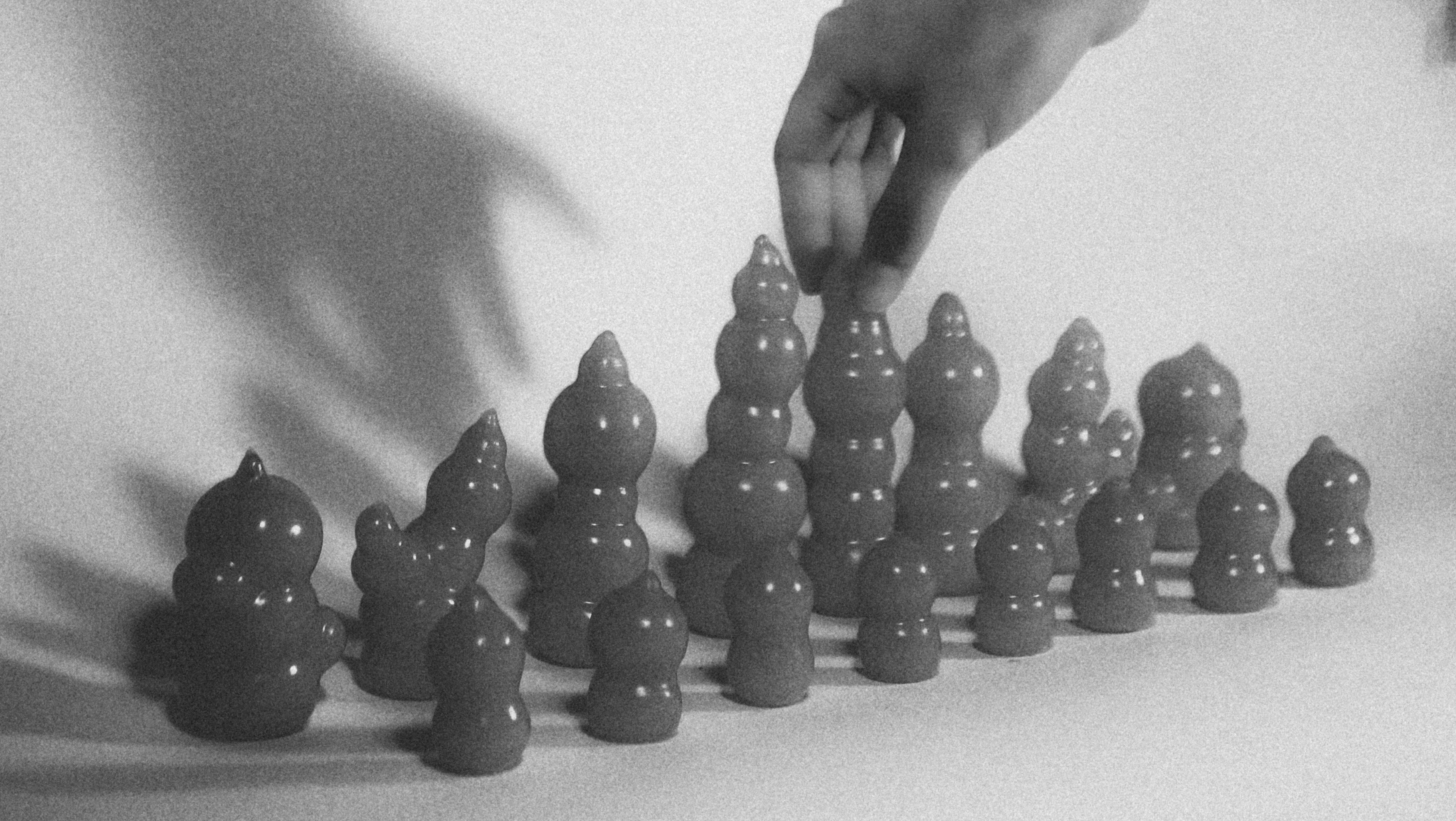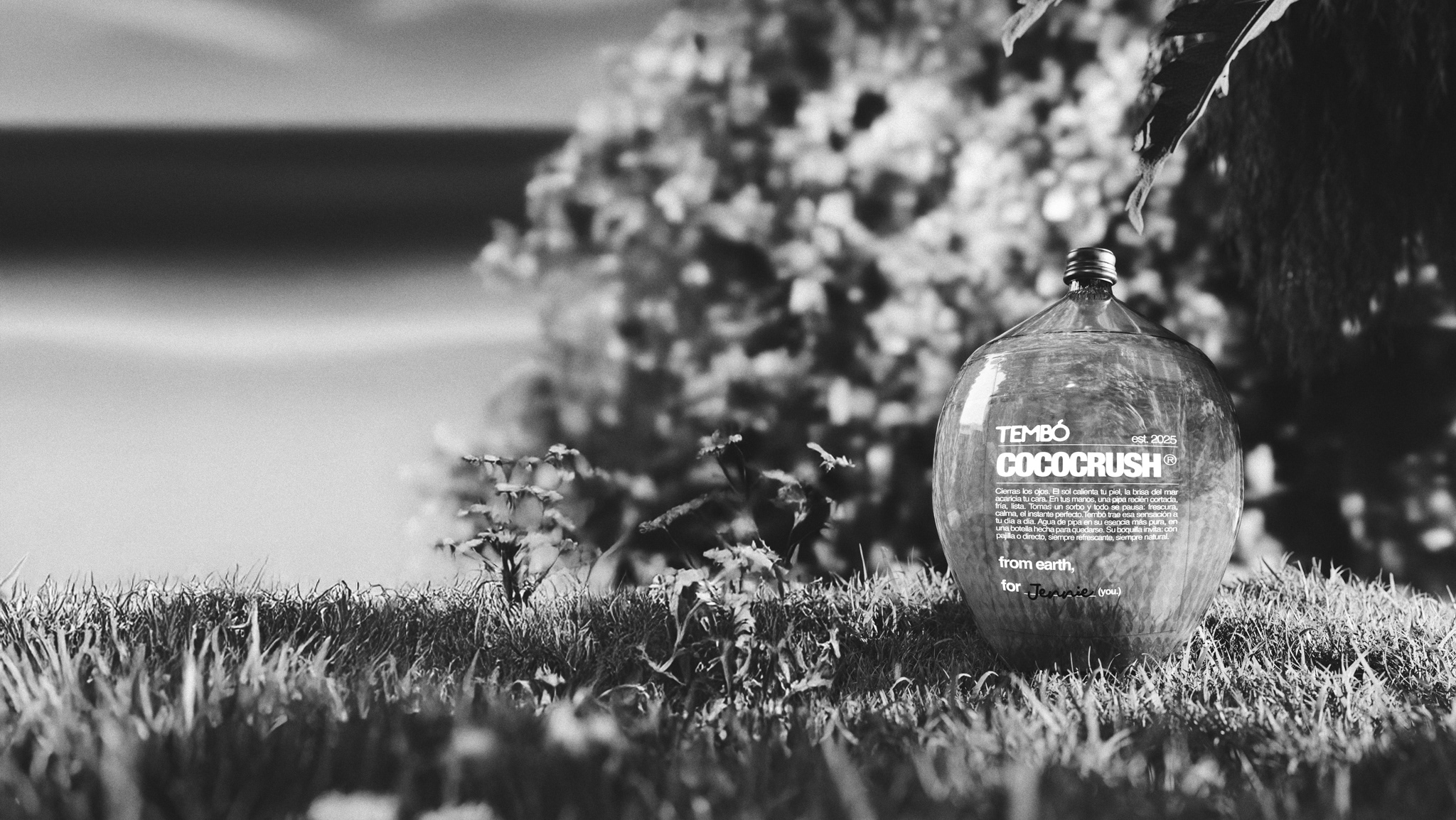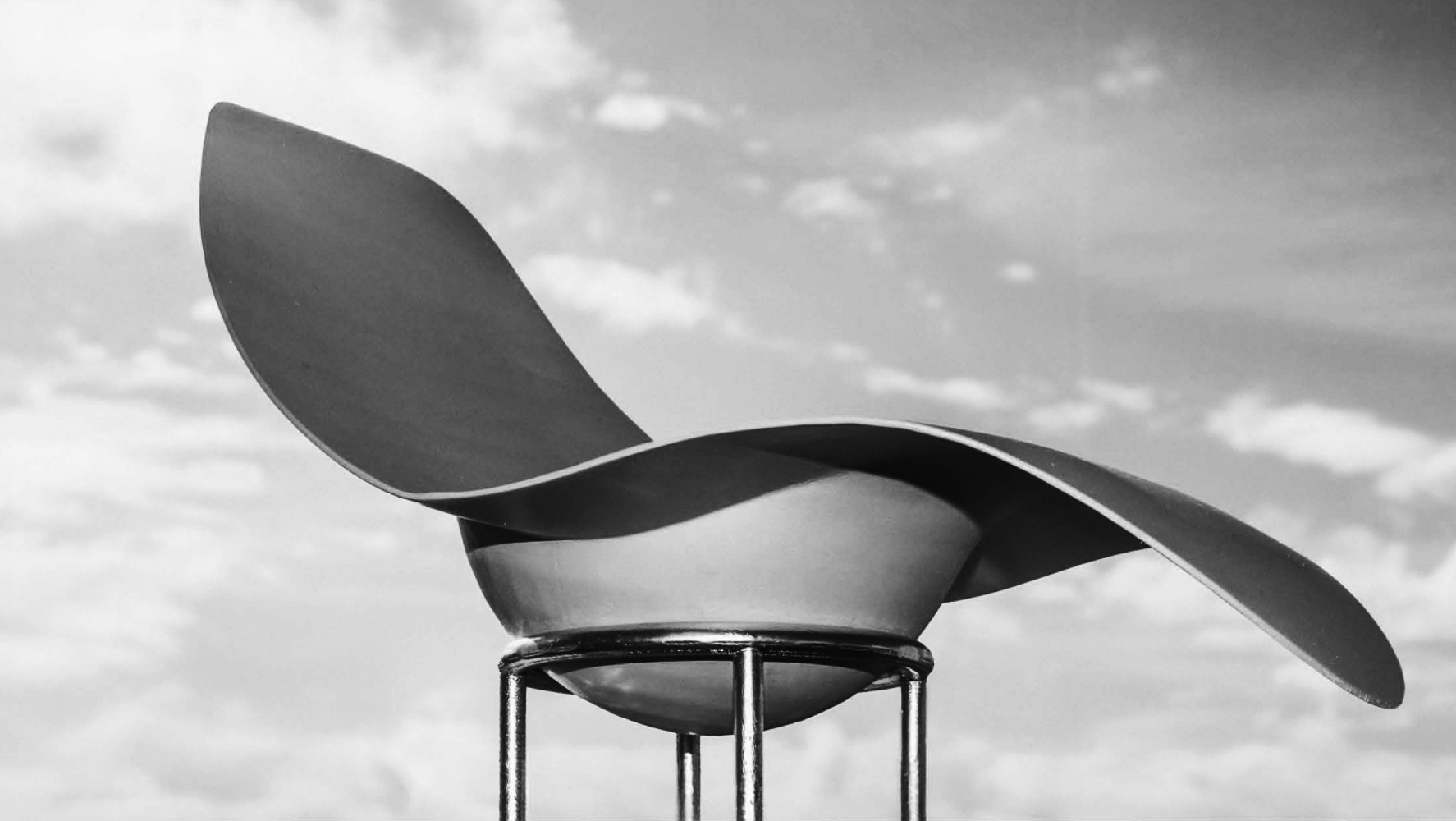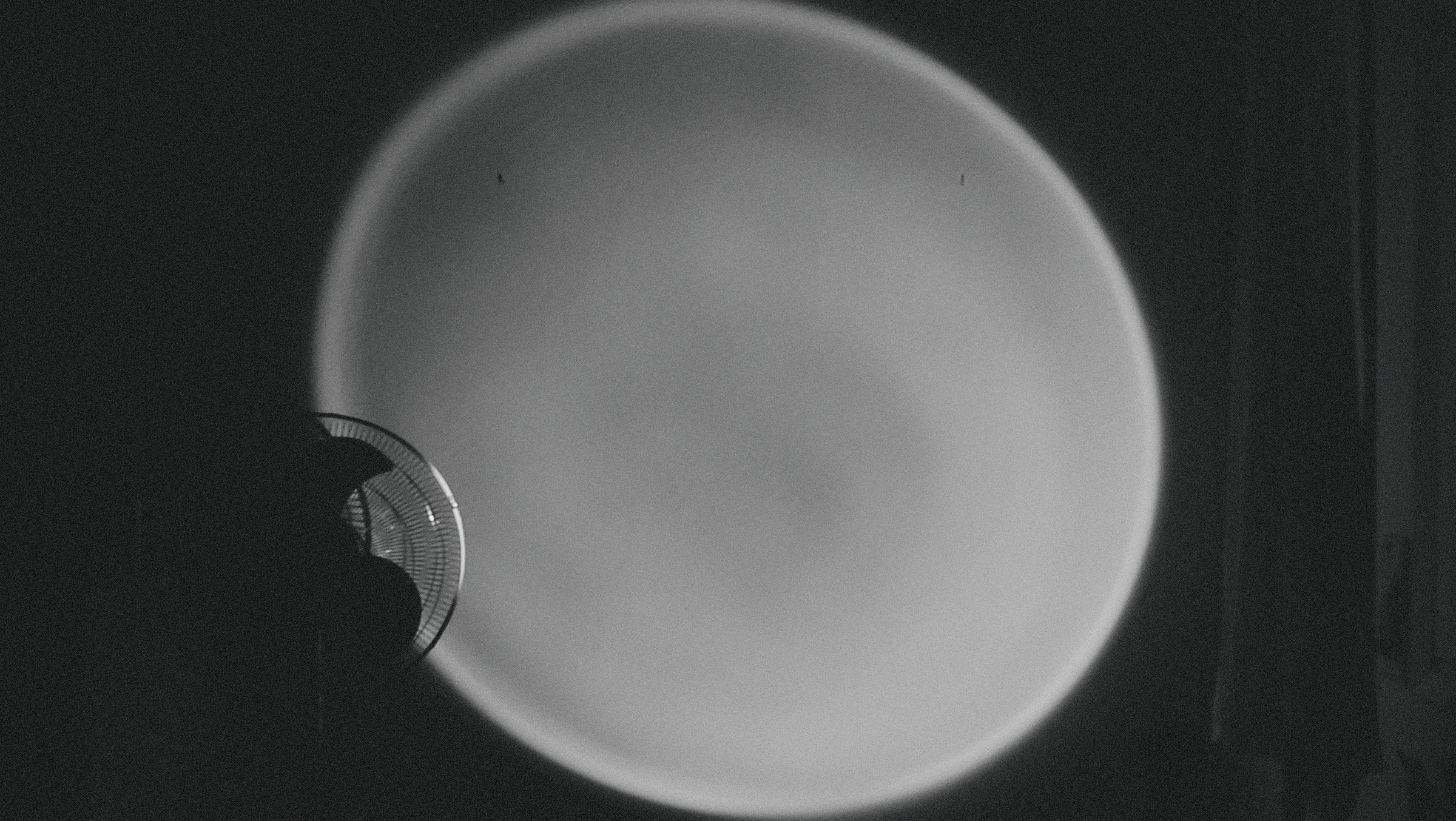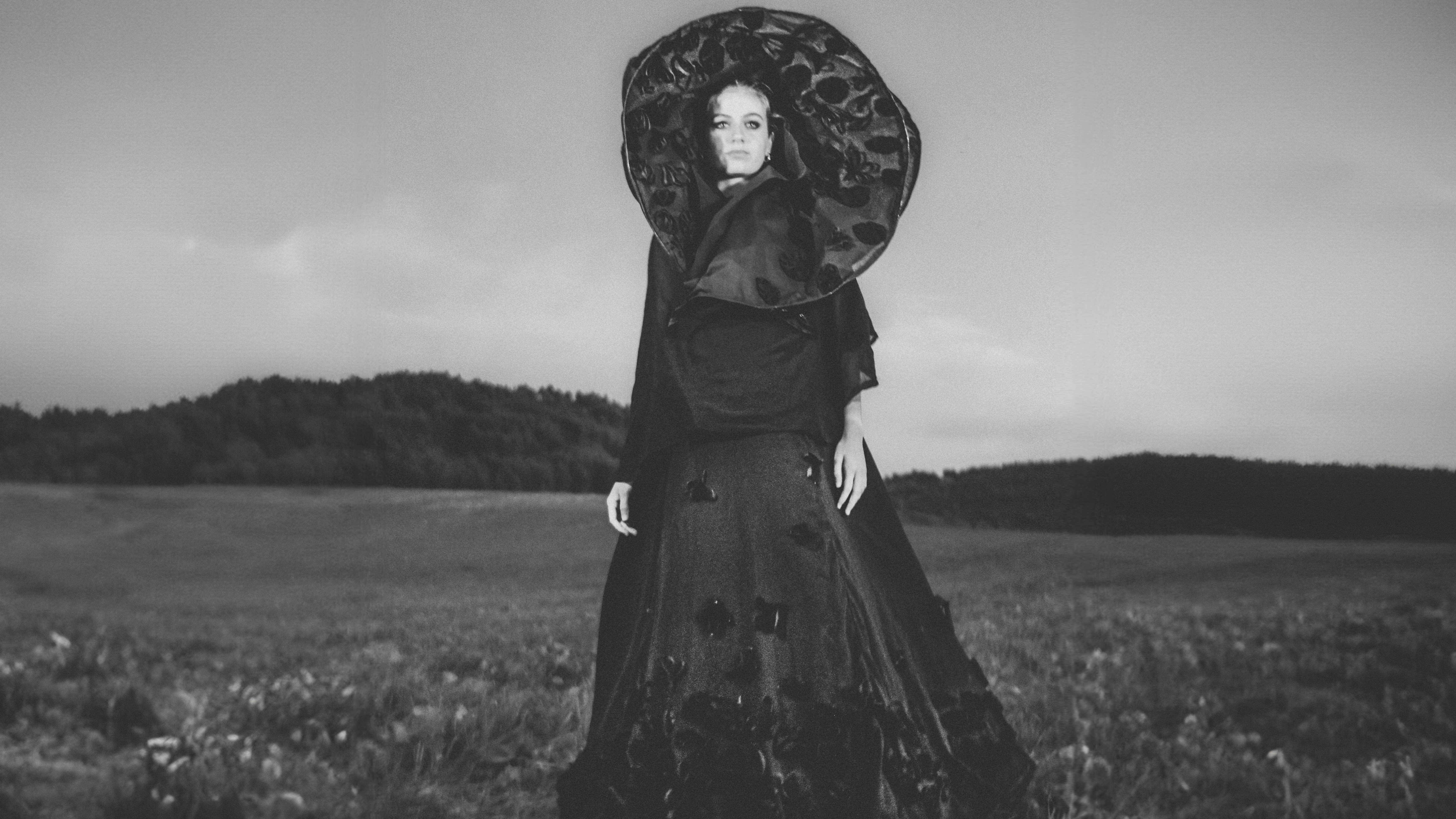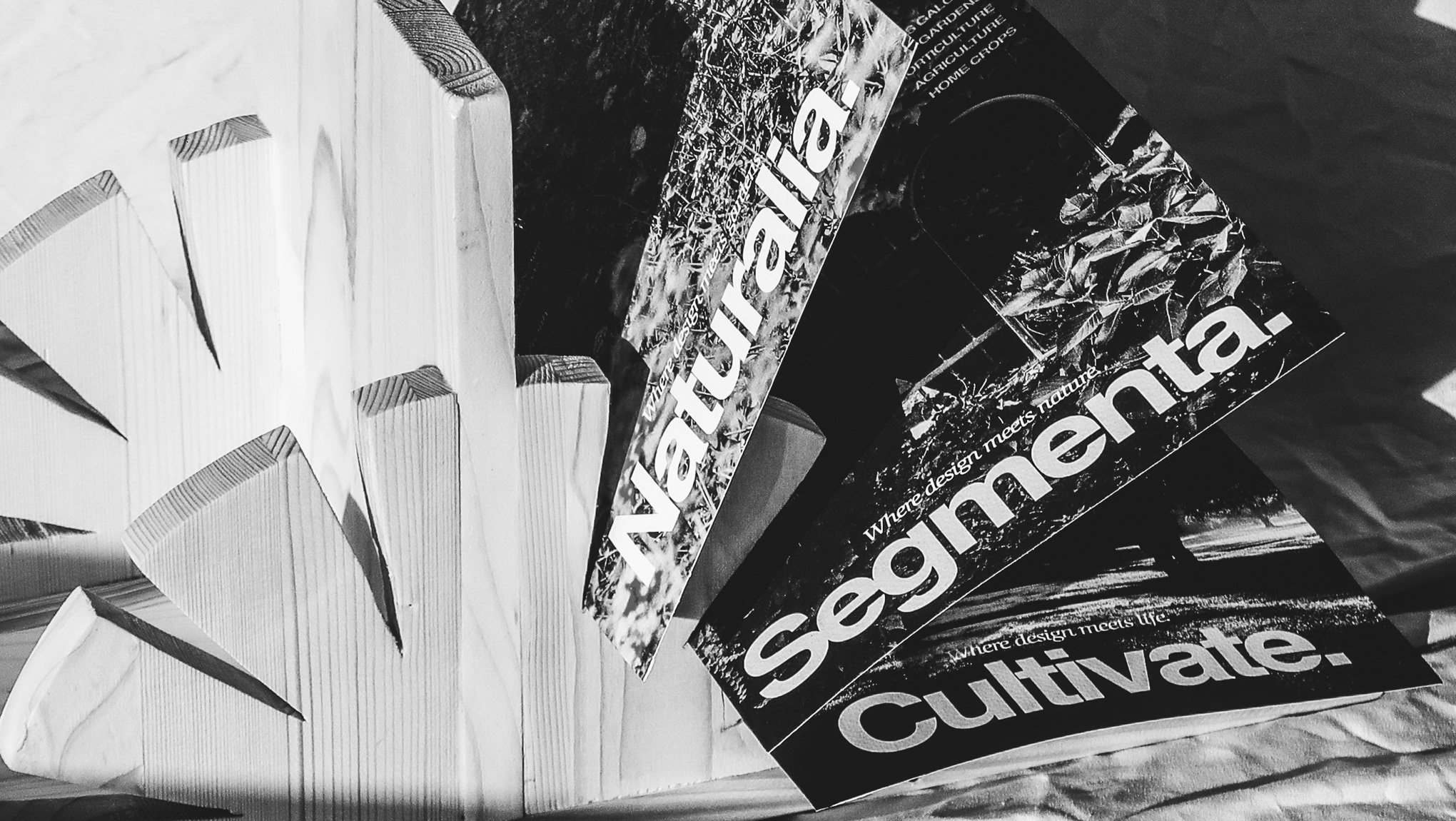First place winner of the Young Talents Design Contest of Saltoki Home.
The Vivi table is an auxiliary piece designed for Saltoki Home, combining functionality, contemporary aesthetics, and principles of circularity. Its design emerges from the need to reuse leftover natural stone, marble, and porcelain scraps generated in the production of countertops and other products by Marmolatek.
The structure of Vivi is made from aluminum, with corners and cutouts that are gently rounded, giving it a sense of lightness and warmth, setting it apart from traditional metal tables that tend to feel more rigid or cold. The joining system is based on a mechanism of tabs and slots integrated into the die-cut base, which fold at a 90-degree angle and fit into the tabletop support, providing stability without the need for hardware or additional fastenings. This approach simplifies assembly, facilitates recycling at the end of the table's life, and reinforces its base.
The tabletop, made from stone scraps, rests on lateral extensions that adjust to its shape, allowing it to adapt to different thicknesses and material combinations. This versatility ensures that each table is unique and that leftover pieces of various dimensions are utilized.
Vivi not only represents an efficient and sustainable design but also a proposal that aligns with Saltoki Home's aesthetic identity, bringing modernity and sophistication to any space.
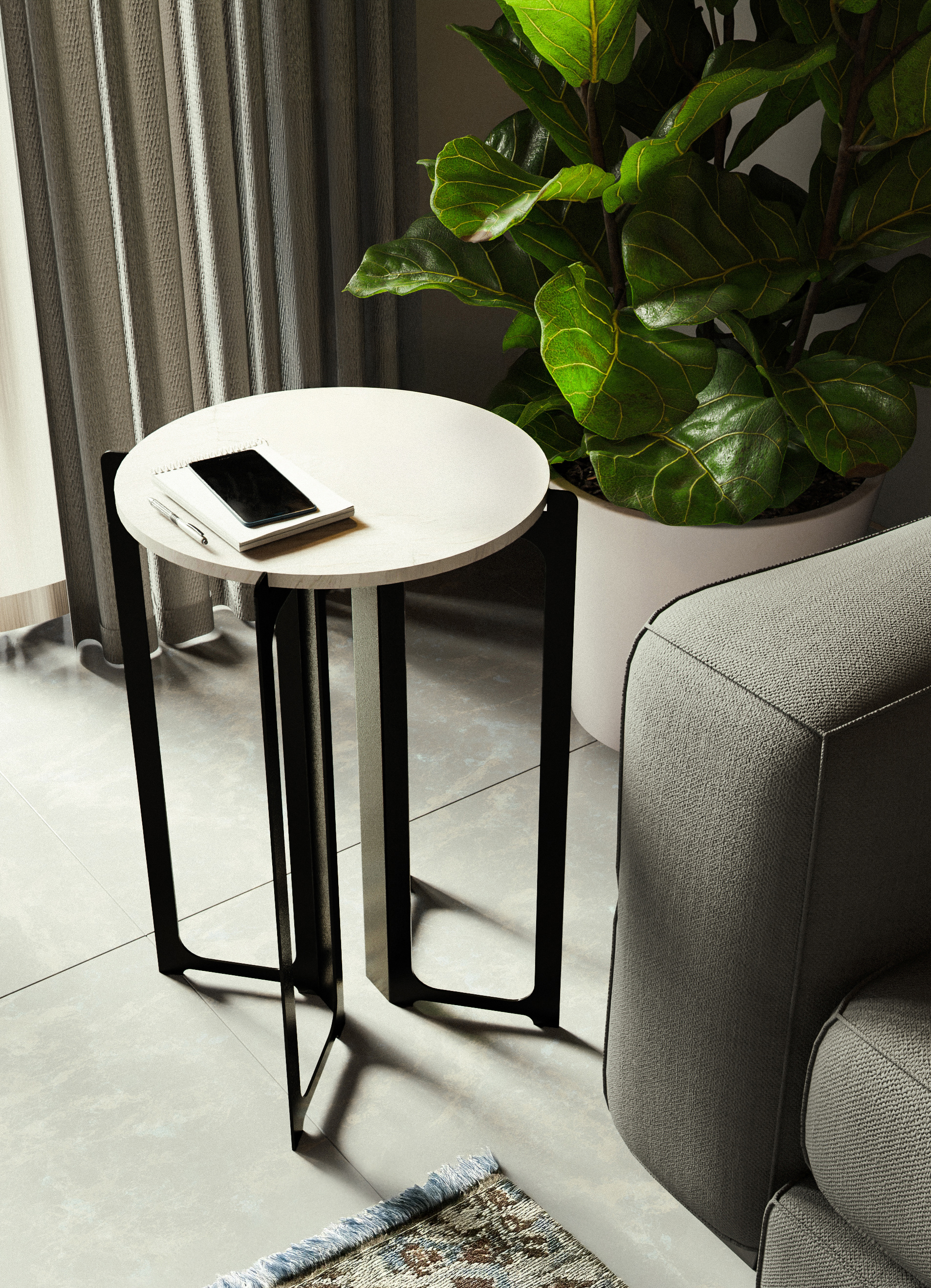
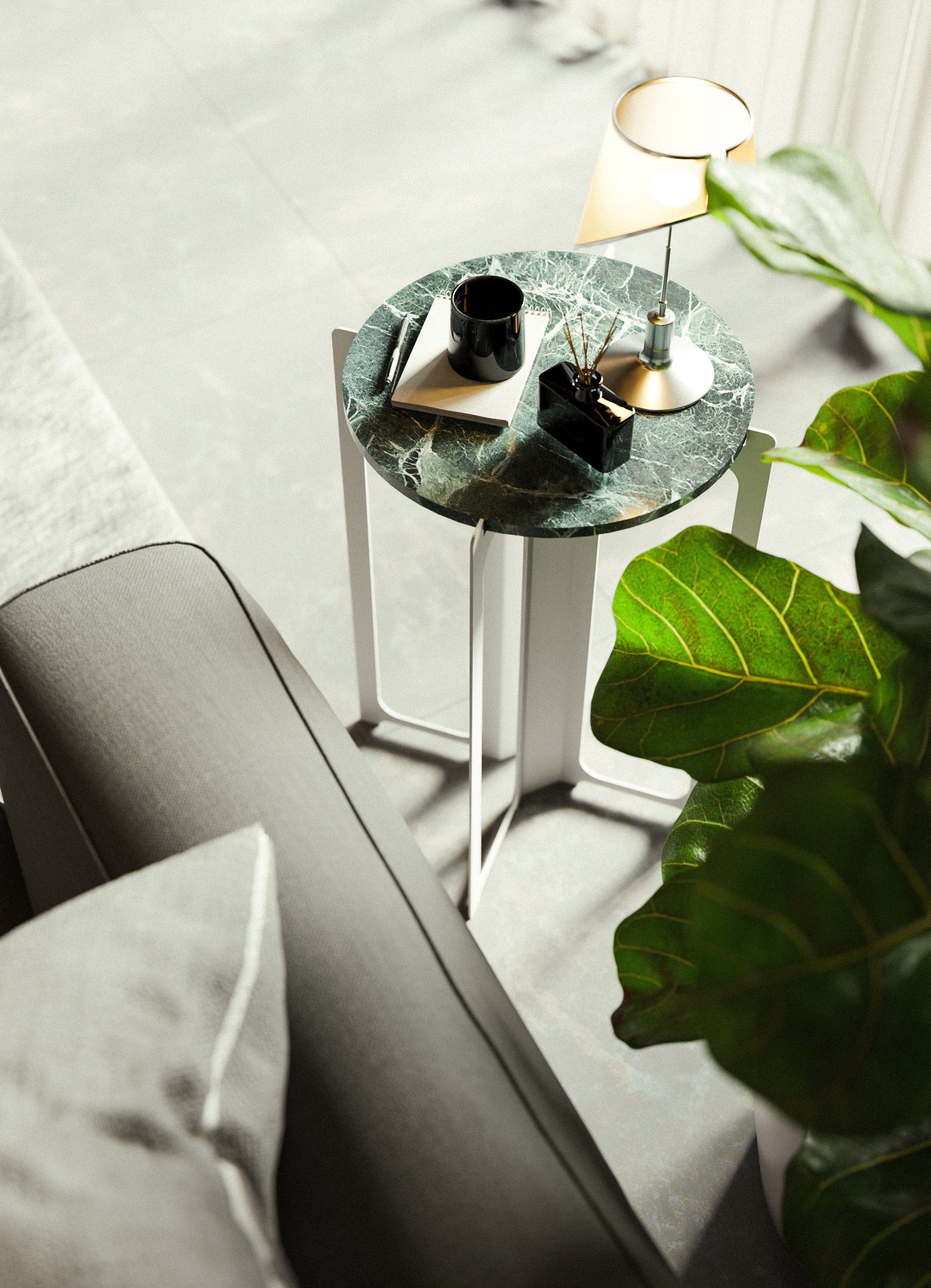
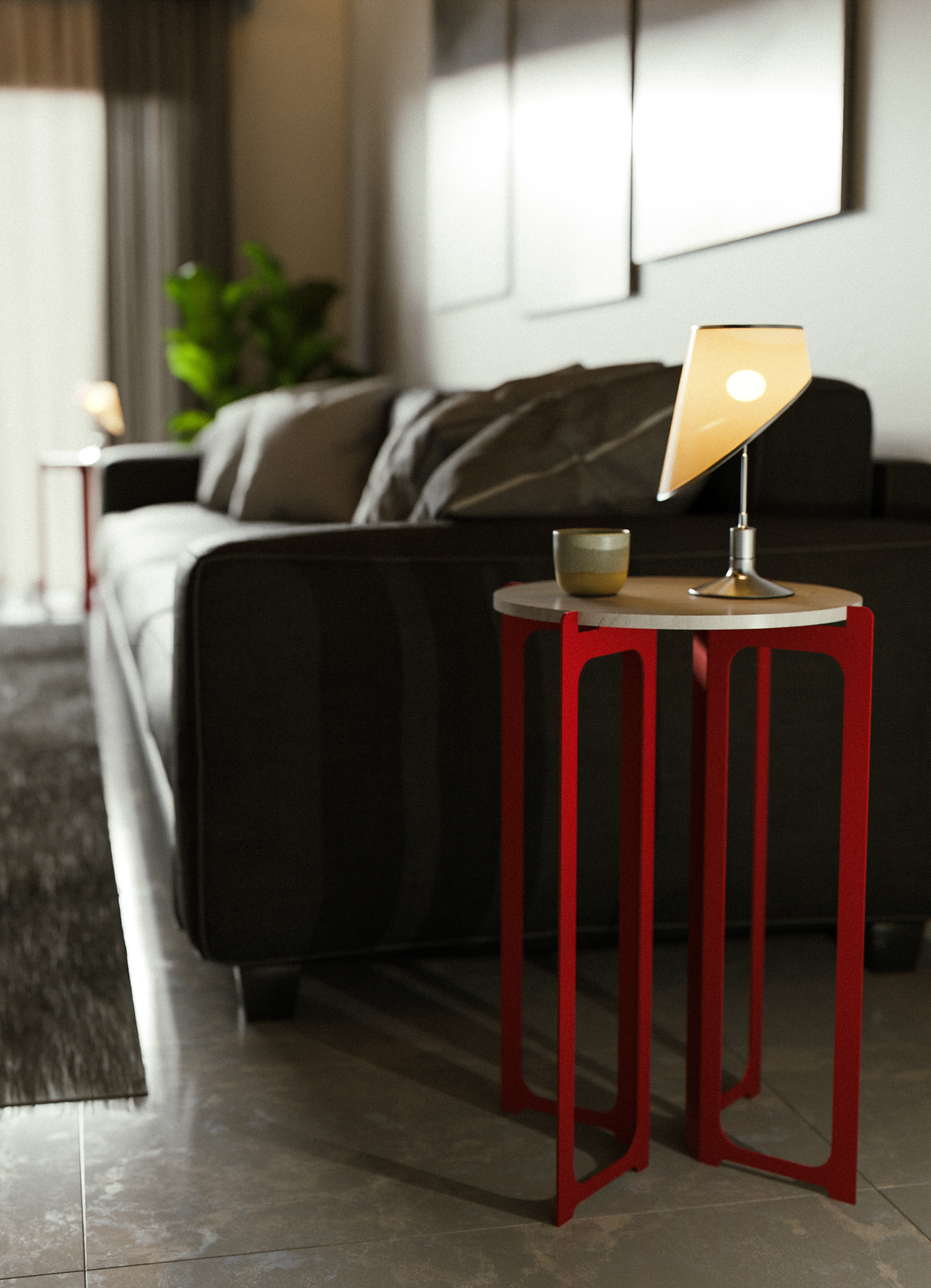
Vivi is not just an auxiliary table, but the starting point for a family of tables, thanks to its adaptable design.
JOINT SYSTEM
The fastening system takes advantage of the structure’s die-cut design to attach itself to the tabletop support. The structure includes tabs that fold at a 90-degree angle, along with slots that allow the top support to be assembled. To achieve the connection, the tabs are inserted into the slots and then folded outward, ensuring a firm attachment without the need for hardware or additional joints. This mechanism not only securely connects both bases but also reinforces the tabletop’s foundation, adding greater solidity to the overall structure. This design detail is directly linked to our commitment to the product’s circularity. At the end of its life cycle, the table can be easily recycled in its entirety, since it does not require disassembling or separating components made of different materials—removing the tabletop is enough to reintegrate it into the material cycle.
DESIGN DETAILS
Curvatures: the rounded corners of the table’s structure (seen in the image below on the left)—including the cutouts and the base that touches the ground—were designed to convey a sense of lightness and a friendly character. With this detail, we aim to set ourselves apart from many current metal table designs, which often feature a more robust and sometimes cold aesthetic. Extended sides as support (seen in the top and bottom images below on the right) : to provide greater stability and secure attachment to the tabletop, the sides were elongated, creating extensions that fit the dimensions of the stone surface. This detail was designed with the need to accommodate different thicknesses of stone offcuts, as these can vary depending on the combination used.
Context within the Saltoki Home identity
Within the Saltoki Home collection, tables stand out for combining functionality with contemporary aesthetics, aligning with the brand's values and responding to user needs. Inspired by designs like the Shim Coffee Table by Jonas Trampedach for HAY, with its folded metal structure and versatile colors, we explore the use of color and joining through folding. The Rebar Side Table by Sylvain Willenz offers an industrial vision reinterpreted with a structure of corrugated rods and lightweight tops, integrating materiality and process. Charlotte Perriand’s Table à Plateau Interchangeable, a timeless classic edited by Cassina, inspired us to think about modular systems with interchangeable tabletops. Finally, Mario Ruiz’s Padi collection for Joquer reinterprets modularity from a more organic perspective, with curved legs and soft shapes that bring dynamism. These references have been key in developing a proposal that aligns with the sophisticated and adaptable character of Saltoki Home.
Case study of trends
Knowing that the design had to align with the principles of circularity, we focused on analyzing trends that promote the creation of sustainable and timeless products, with particular attention to structures that use a single material for the joints, optimizing both durability and environmental impact. Among our main references is the FlatFlat collection by Aidan Reinhold, showcased at various international events, which stands out for its ability to be flat-packed and assembled without carpentry, using recyclable metal and lightweight materials. The HBMS Shelving Unit by Pierre Salaün was also key, as it allows assembly through laser cuts and hand-folded tabs, without additional fasteners. Another influential example was the Dedalo Bookcase by Guerriero and Tamborrino, made entirely of laminated steel and assembled with tabs that ensure precision and strength without sacrificing aesthetics. Finally, the Sato Side Table by noo.ma, made from laminated steel with a functional and compact design, integrates durability, style, and accessibility, aligning with our sustainable and contemporary approach.
A little behind the scenes...

